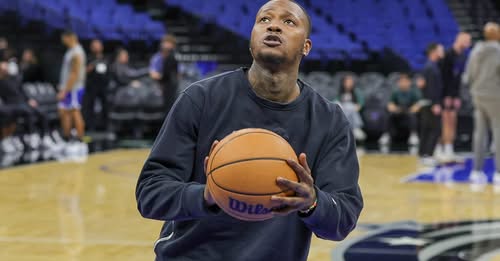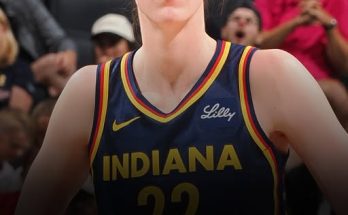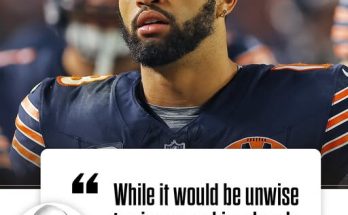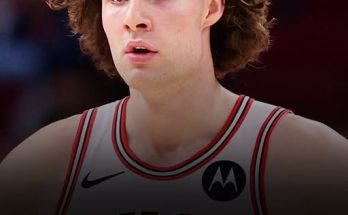In a sports gambling world where even the most seasoned professionals struggle to maintain consistent winning percentages, the story emerging around a professional bettor who successfully nailed all 30 of their bets on Terry Rozier’s unders before the veteran exited the game just 10 minutes into action is as rare as it is sensational. Sportsbooks are built on risk management, oddsmaking, and statistical precision, so when a bettor so efficiently dismantles their projections on a single player—multiple times over—it sends shockwaves throughout the entire betting ecosystem.
To put this feat into perspective, consider what goes into placing 30 separate bets, all with the same throughline: that Terry Rozier would fall short of the statistical lines being offered by sportsbooks for points, assists, rebounds, or combinations of those. Hitting on all 30 isn’t just improbable—it’s virtually unheard of, even for professionals. It takes a perfect storm of predictive insight, real-time information access, and—most crucially—an edge, whether through legitimate inside information or an extraordinary read of unfolding events.
Terry Rozier, a veteran guard known for his explosive scoring streaks and on-ball prowess, wasn’t exactly a high-risk play entering that matchup. His recent performances had been relatively consistent, and although minor injuries had plagued him over the season, nothing prior to tip-off indicated he would be limited to just 10 minutes of action. For casual fans, that early exit might have been chalked up to bad luck or another fluke in the long NBA season. But for this bettor, the truncated playing time became a golden ticket—one that validated 30 separate wagers.
Now, a bettor placing that many bets on one player, all on the under, suggests a few things. First, the bettor either knew something or anticipated something the sportsbooks didn’t. While “sharp” bettors often bet overs and unders based on value, it’s far more common for them to spread their risk—especially with props—than to load up entirely on a single player. So, when a professional locks in 30 unders on Rozier, it’s likely not by accident. There may have been whispers of a minutes restriction, discomfort, illness, or even planned load management that hadn’t made its way to the public injury report.
What makes this scenario even more fascinating is that Rozier’s exit 10 minutes into the game wasn’t part of any known plan from the team. He checked out after a standard shift and didn’t return—something that caught broadcasters, fans, and fantasy players off guard. The subsequent news that Rozier was dealing with lingering discomfort only came after the fact. Yet, this bettor was ahead of the curve. Was it luck? Coincidence? Or something more calculated?
If insider knowledge played a role, sportsbooks will undoubtedly launch internal reviews. Monitoring accounts that consistently beat props right before unexpected changes—especially when it happens at scale—is something all major operators do. It’s part of why some of the sharpest bettors end up getting limited or banned altogether. Books can tolerate losses, but they have no patience for patterns that suggest someone is exploiting informational gaps that other bettors don’t have access to.
It’s important to distinguish between legal sharp betting and manipulation or rule-breaking. In many cases, a sharp edge might simply come from faster reaction to legitimate news—perhaps a team beat reporter noticed something during warmups, or maybe a player hinted at something during pregame interviews. In today’s hyper-connected sports landscape, where social media posts and body language can shift markets within seconds, professional bettors are often just faster and more focused than the average player.
Still, this particular instance stands out because of the sheer volume of bets placed and their perfect hit rate. Thirty bets. Thirty wins. All on Rozier failing to hit his marks—points, assists, rebounds, you name it. It reads like a script from a gambling thriller, the kind of story that quickly becomes folklore among the sports betting community.
And that community, by the way, took notice immediately. As screenshots circulated across online betting forums and X (formerly Twitter), the chatter intensified. “Whoever this is needs a statue,” one user joked, while another speculated that “this has to be one of the greatest prop betting runs of all time.” And really, who could argue? Even elite sharp bettors win at a 55-60% clip long-term. Hitting 100% across 30 bets on a single game-related event isn’t just winning—it’s domination.
It also raises larger questions about the current state of the prop betting market. Prop bets, especially player-specific ones, have exploded in popularity over the past few years. With that growth has come more opportunity—not just for fans to stay engaged but for skilled bettors to exploit inefficiencies. Unlike sides and totals, which are heavily scrutinized and bet into by syndicates, prop markets are more fluid and less aggressively monitored. Oddsmakers simply don’t have the resources to fine-tune every single player’s line with the same level of rigor, especially across hundreds of games per week.
And that’s where stories like this emerge. A player has a potentially questionable status that doesn’t reach the official injury report. A bettor picks up on it—maybe from a comment buried in a postgame presser, or from observing bench behavior in a previous game—and starts hammering unders. If done strategically and fast enough, the books don’t have time to react. And if the player then exits early, whether planned or due to unforeseen circumstances, the payoff is massive.
But while the bettor’s brilliance is undeniable, so is the fact that sportsbooks will be watching closely. In today’s regulated betting environment, integrity is everything. State gaming commissions, sportsbook risk departments, and even league officials all work together to identify and investigate anomalies. It’s possible that nothing shady occurred here at all, but don’t think for a second that such a spotless record will go unnoticed.
For Rozier, this situation may never register beyond the postgame injury updates. But for the bettor who seized the moment, it may go down as one of their most legendary nights. Not just for the payout—though that was likely substantial—but for the audacity and accuracy of the wagers themselves. Betting on unders isn’t glamorous. Fans like to cheer for overs. They want action, highlight dunks, buzzer-beaters. Betting the under means you’re hoping for missed shots, limited playing time, bad shooting nights. It’s counterintuitive, and it takes a certain type of temperament to embrace it.
But in this case, the under wasn’t just the smarter play—it was the only play. And the bettor who recognized that before the rest of the world deserves credit for the strategic vision, discipline, and perhaps a touch of clairvoyance. Thirty straight wins on one player’s downfall. It’s the kind of streak that will be analyzed, envied, and whispered about in gambling circles for years.
Of course, the impact goes beyond just one night. Stories like this influence future lines. Oddsmakers become more cautious. Limits on props might tighten. Sportsbooks may slow their willingness to offer lines on potentially injury-prone players until closer to tip-off. And for other bettors, this becomes a masterclass in what’s possible when preparation meets opportunity.
In a landscape where winning 55% is enough to get you called elite, this bettor pulled off something that flirts with perfection. The next time Rozier is on the board, books and bettors alike will remember this night. And somewhere, in a room lit by multiple monitors, with stat feeds buzzing and insider reports refreshing, that professional bettor might just be plotting their next perfect storm.



